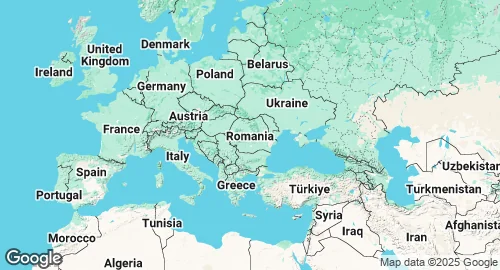Romania Military Forces 🇷🇴
Military Strength Overview
| 🛩️ Air Force | 142 active aircraft |
| 🪖 Active Troops | 69,300 personnels |
| ⛑️ Reserve Troops | 50,000 personnels |
| 👮♀️ Paramilitary | 57,000 personnels |
| 🗺️ Air bases | 1 active air bases |
| 🎖️ Military ranks | 66 ranks listed |
Defense Statistics & Key Metrics
| Population | 19.1 million (2023) |
| GDP | $350.8 billion (2023) |
| GDP per capita | $18404 (2023) |
| Military Budget | $8.7 billion (2024) |
| Share of GDP in Milex | 2.3% (2024) |
| Share of Govt Expenditures | 5.9% (2024) |
| Military spends per capita | $457 (2024) |
| Inflation Rate | -4.52% (2024) |
| Military Personnel | 128,000 (2020) |
Strategic Overview in 2025
Nestled on the western shore of the Black Sea, Romania occupies a highly strategic position on NATO's eastern flank. Its foreign and security policy is firmly anchored in its memberships in NATO and the European Union, which it views as the primary guarantors of its sovereignty. The security environment in the Black Sea region fundamentally shapes Romania's defense posture, with a focus on collective defense and deterrence. Bucharest is an active participant in NATO's Enhanced Forward Presence, hosting a multinational battlegroup. It also plays a key role in regional security initiatives aimed at countering potential threats in the Black Sea.
Military Forces and Capabilities
The Romanian Armed Forces have transitioned from a conscript-based model to a professional force, comprising the Land Forces, Naval Forces, and the Air Force. The defense budget has seen a significant increase, exceeding the 2% of GDP benchmark required by NATO. This increased spending is driving a comprehensive modernization program.
The Land Forces are undergoing a significant upgrade, with the acquisition of Piranha V armored vehicles and K9 self-propelled howitzers. The Air Force is transitioning its fighter fleet to F-16s and has plans to procure F-35s, alongside operating C-27J Spartan transport aircraft and IAR 330 helicopters. The Naval Forces operate a mix of former Royal Navy frigates, corvettes, and riverine patrol vessels, tasked with securing the nation's maritime approaches.
Defense Industry and Procurement
Romania's defense industry, largely centered around the state-owned company ROMARM, has a long history of arms manufacturing. However, after a period of decline post-1990, it now faces the challenge of modernization. The government is actively seeking to revitalize the domestic industry through international partnerships and by directing a portion of its increased defense budget towards local production. The procurement strategy prioritizes interoperability with NATO allies, with a strong preference for Foreign Military Sales (FMS) from the United States and other key partners. Key areas for acquisition and modernization include armored vehicles, artillery systems, air defense, and fighter aircraft.
Strategic Trends
Looking ahead, Romania's military strategy will continue to be driven by its commitment to NATO's collective defense and the security situation in the Black Sea. The country is poised for a sustained period of military modernization, with plans to further increase defense spending through 2030. A key focus will be on enhancing its own defense capabilities while simultaneously strengthening its role within the Atlantic alliance. The government is also working to update its national defense laws to better integrate with allied forces and improve military mobility.
Romanian Military Budget History
Population and Military Personnel Trends
GDP and Inflation Rate Trends
Romanian Aircraft Manufacturing
| Model | Manufacturer | Year | Number |
|---|---|---|---|
| IAR-93 / J-22 Orao | CNIAR/Soko | 1974 | 88 |
| IAR-99 Șoim | Avioane Craiova | 1985 | 28 |
Military Expenditure: SIPRI Milex.
